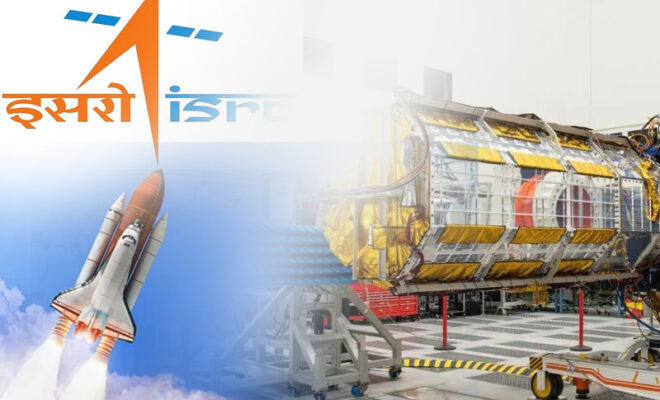ISRO To Launch Indo-US Space Mission ‘NISAR’ In Early 2024

The US Air Force has brought ISRO-NASA satellite ‘NISAR’ to Bengaluru. ISRO will launch this Indo-US space mission in early 2024, for various purposes.
The eagerly anticipated NASA-ISRO Synthetic Aperture Radar, or NISAR, has arrived in India after being jointly developed by scientists from the US and India. At NASA’s Jet Propulsion Laboratory in California, the massive scientific payload was being integrated.
The satellite, according to the Indian Space Research Organisation (ISRO), arrived in Bengaluru from the US on a USAF C-17.
The final stage of the mission, which entails its integration into the spacecraft bus, has been set in motion by its arrival.
Before the satellite is authorized for launch from Sriharikota’s Satish Dhawan Space Center in the first quarter of 2024, ISRO will now direct the mission’s final leg over the coming months.
Two distinct radars make up the mega satellite. While American researchers created the long-range L-band radar, their Indian equivalents in Bengaluru independently prepared the S-band radar.
After that, both were delivered to the Jet Propulsion Laboratory (JPL), where they were combined into one.
This has now been transported to India for the last GSLV launch (Geosynchronous Satellite Launch Vehicle).
Every 12 days, the mission will trace the entire world and capture locations that would otherwise be hidden. A 12-inch-diameter megadrum-shaped antenna, one of the biggest that NASA has ever launched into space, will join the two radars together.
Although there are many earth-observing satellites in orbit, NISAR has the ability to record minute changes on Earth with unmatched resolution and accuracy.
For the next 3 years, the radars will enable it to see through heavy cloud cover both during the day and at night. Even changes as tiny as 10 m can be detected by it.
The radar will begin gathering extensive data on how the earth, including the land and ice plates, are shifting down to fractions of an inch once it is launched into space next year.
It will be useful in determining the rate of glacier flow, the rise in sea levels, and the effects of global warming.
Additionally, it will be able to determine whether there has been any sinking of the land and how much the nearby regions have been impacted by groundwater depletion.
The mission will also arm the scientific community with a wealth of information that can aid in forecasting the most difficult natural disasters, including earthquakes, volcanoes, and landslides.
Agriculturists can also benefit from the data, which can reach almost 80 terabytes per day, as the radar will deliver high resolution data of soil moisture essential for spotting warning indications of droughts or wildfires.
Also Read:- PM Chairs High-Level Meet On Hot Weather, Fire Audits of Hospitals



